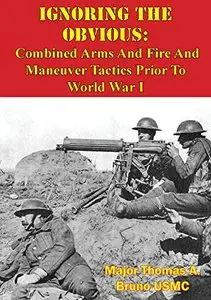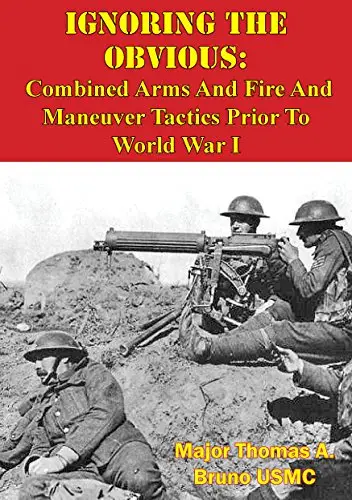Ignoring The Obvious: Combined Arms And Fire And Maneuver Tactics Prior To World War I by Major Thomas A. Bruno USMC
English | Mar 3, 2015 | ASIN: B00U86LBNG | 116 Pages | EPUB/PDF (Converted) | 1.64 MB
English | Mar 3, 2015 | ASIN: B00U86LBNG | 116 Pages | EPUB/PDF (Converted) | 1.64 MB
Fairly or unfairly, the stalemate on the First World War’s Western Front is often attributed to the intellectual stagnation of the era’s military officers. This paper traces the development (or absence of development) of combined arms and fire & maneuver tactics and doctrine in the period prior to WW I, focusing on the Russo-Japanese War.
The Western armies that entered the Great War seemingly ignored many of the hard-learned lessons and observations of pre-war conflicts. Though World War I armies were later credited with developing revolutionary wartime tactical-level advances, many scholars claim that this phase of tactical evolution followed an earlier period of intellectual stagnation that resulted in the stalemate on the war’s Western Front. This stalemate, they claim, could have been avoided by heeding the admonitions of pre-war conflicts and incorporating the burgeoning effects of technology into military tactics and doctrine. Some go even further and fault the military leadership with incompetence and foolishness for not adapting to the requirements of modern war.
The Russo-Japanese War showed the necessity for combined arms techniques and fire and maneuver tactics on the modern battlefield. Specifically, the war showed the need for: (1) the adoption of dispersed, irregular (non-linear) formations; (2) the employment of fire and maneuver techniques and small unit-tactics, including base of fire techniques; (3) the transition to indirect-fire artillery support to ensure the survivability of the batteries, and; (4) the necessity for combined arms tactics to increase the survivability of assaulting infantry and compensate for the dispersion of infantry firepower.
However, deeply ingrained concerns over the loss of control on the battlefield and faith in the ability of morale to overcome firepower prevented the full realization of advanced combined arms techniques and fire and maneuver tactics. Instead, the lessons of the Russo-Japanese War were disregarded or minimized.
Military leaders did not ignore the lessons of the Russo-Japanese War. In fact, the ramifications of increased firepower and rudimentary techniques of fire and maneuver tactics were addressed in most nations’ pre-World War I doctrine. Unfortunately, these concepts were not fully developed or practiced due to a failure to recognize a change to the fundamental nature of warfare itself. Massive firepower necessitated a new system of warfare. To effect this type of transformation, the entire military culture—equipment, doctrine, organization, and leadership— would have to evolve. Lamentably, the hard-earned lessons of the Boer and Russo-Japanese Wars had not prompted such a reformation. It would take the cataclysm of the First World War to act as a catalyst for this transformation.



